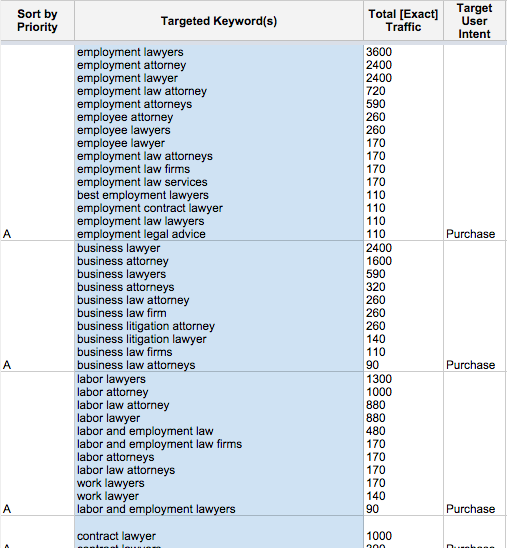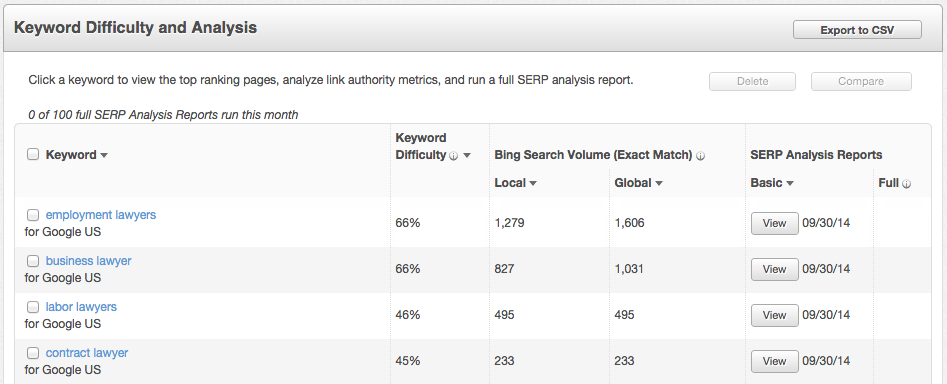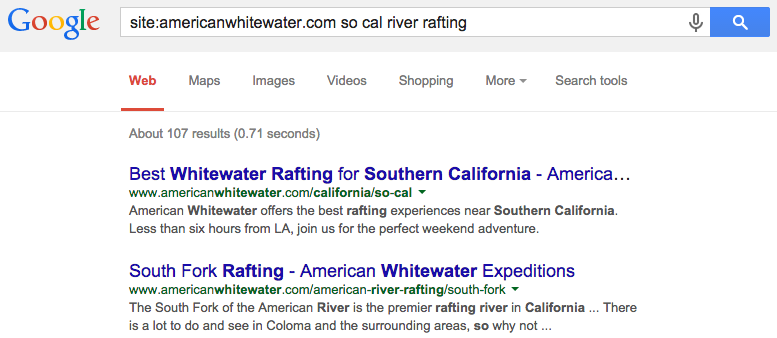Turn Keywords Into ROI: Components of a Results-Oriented Ranking Strategy
Did you know that SERP diversity is actually decreasing? In other words, fewer URLs are ranking for the most competitive keywords as Google gives more and more attention to the pages that perform the best. “But wait, I have a (short, not-very-insightful) landing page built for every single keyword on my list!” How are those pages performing lately? I would guess that they haven’t seen much traffic lately (amIright?), and here’s why:
- Google cares (way) more about quality content than keyword density.
- Google monitors the performance of your content. Content that engages users earn long-lasting rankings. If your content doesn’t keep users’ attention, it won’t keep rankings.
- Google doesn’t “owe” you rankings. Only the content that performs will earn traffic.
The latest Panda update just drove this home even further. If this is you, your keyword strategy may need a refresh . Here are a few areas to consider.
Build Composites (or Groups) of Keywords
Google’s passionate dedication to understanding user intent means that individual SEO keywords are becoming less important than a holistic understanding of the content on a given web page. So each unique keyword is no longer a target itself, but rather part of a topical composite. How do you build a content strategy around composites instead of individual keywords? Start with your list of keywords, open a new spreadsheet, and start sorting. AdWords might have given you some AdGroups to get you started, but you’re going to go through the list and group together the keywords that are highly related. As you organize keywords into composites, you will eventually want to confine each group to one row.

A spreadsheet outlining a legal firm’s content-based SEO strategy. Individual keywords that are obviously related (if not essentially the same) are grouped and ranked.
If you are unsure about grouping certain keywords together, search for the keywords in question and compare the SERPs. If the results are similar — a lot of the same results show up on both pages — then those keywords do belong in the same group. (This is also a good exercise for when you’ve finished grouping. Chose a few out of each group and search for them to make sure the results are similar. Sometimes what seems parallel to someone in the industry means something else to Google. If the keywords aren’t the same in Google’s eyes, you may not want them in the same group.)
Traffic and Difficulty
Now, add a couple columns to your spreadsheet to prioritize your keyword groups based on traffic and difficulty rating. Moz provides a killer Keyword Difficulty and SERP Analysis tool that assigns a difficulty score as a percentage (where 100% equals impossible). To stay organized, use the difficulty score of the most highly trafficked keyword in each group.  It still makes SEO sense to focus on keywords with the least competition and most traffic. The difference is that you are now targeting keyword composites, not individual keywords.
It still makes SEO sense to focus on keywords with the least competition and most traffic. The difference is that you are now targeting keyword composites, not individual keywords.
Identify Content Gaps
Finally, you want to determine where your site is already performing well, and where there are gaps in your content. You do this with a simple Google query: “site:yourdomain.com your keyword”.  You will have one of three results:
You will have one of three results:
- If the first result is already a detailed, valuable piece of content about the topic at hand, consider improving the existing content, or moving on to other ‘content gaps.’
- If a high-quality content asset is in the rankings but is not #1, consider adding it to your website navigation (where appropriate), or adding other internal links to the page to indicate to Google that it is your most authoritative piece of content on the subject.
- If no relevant, high-quality content shows in the results, this is a content gap!
You don’t need to search every keyword, just one or two from each group, because you’re writing content for the whole group.
Refocus to Restrategize
It’s relatively simple to update your keywords strategy. Just remember that it’s not about the keyword as much as it is about user intent and the topic at hand. Grab a fresh cup of coffee, round up those keywords, open a new spreadsheet – it’s time to change the world! (Cue epic background music.)
What's Next?
Profound Strategy is on a mission to help growth-minded marketers turn SEO back into a source of predictable, reliable, scalable business results.
Start winning in organic search and turn SEO into your most efficient marketing channel. Subscribe to updates and join the 6,000+ marketing executives and founders that are changing the way they do SEO:
And dig deeper with some of our best content, such as The CMO’s Guide to Modern SEO, Technical SEO: A Decision Maker’s Guide, and A Modern Framework for SEO Work that Matters.




